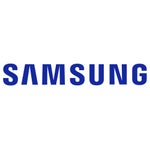News
Samsung Galaxy S26 Ultra Leaked: 6.9-Inch Display, Camera Upgrades & January 2026 Launch
Samsung Galaxy S26 Ultra Leaked: 6.9-Inch Display, Camera Upgrades & January 2026 Launch
Samsung's Galaxy S26 Ultra continues generating buzz with fresh leaks revealing crucial details about the flagship's display, camera system, and launch timeline. Recent information from reliable tipster Ice Universe confirms that Samsung's next Ultra device will maintain a familiar screen size while delivering meaningful camera improvements ahead of its January 2026 debut.
Display Size Remains Virtually Unchanged
The Galaxy S26 Ultra will feature a 6.89-inch display panel, which Samsung will likely market as 6.9 inches – identical to the Galaxy S25 Ultra's marketed size. This minimal 0.03-inch increase over the S25 Ultra's actual 6.86-inch panel suggests Samsung prioritized refinement over expansion.
However, the display story doesn't end with size measurements. Ice Universe hints at significant "surprises" within the panel, specifically mentioning the integration of "Samsung's core display technologies". Industry speculation points toward enhanced third-generation anti-reflective glass and potential anti-snooping AI features that could differentiate the S26 Ultra's visual experience.
The display will maintain the flat design approach introduced with the S25 Ultra, abandoning the curved edges that defined earlier Ultra models. This design consistency reinforces Samsung's commitment to S Pen functionality and edge protection.
Camera System Gets Mixed Upgrades
Main Camera: Significant Low-Light Improvement
The Galaxy S26 Ultra's primary camera represents the most substantial upgrade, retaining the 200MP ISOCELL HP2 sensor while introducing a dramatically wider f/1.4 aperture. This aperture enhancement allows 47% more light intake compared to the S25 Ultra's f/1.7 setup, promising substantial low-light photography improvements.
Samsung's decision to maintain the HP2 sensor while upgrading the lens system demonstrates a focus on optical performance over megapixel inflation. The variable aperture feature will enable automatic adjustments between lighting conditions, potentially offering both improved low-light capture and better depth-of-field control.
Telephoto Cameras: Upgrades and Downgrades
The telephoto system presents a mixed bag of changes. The 3x telephoto camera receives a resolution bump from 10MP to 12MP using Samsung's S5K3LD sensor, providing 20% more pixels for mid-range zoom shots. However, early reports suggest this upgrade might not deliver dramatic quality improvements without aperture enhancements.
More significantly, the 5x periscope telephoto lens gains a wider f/2.9 aperture (improved from f/3.4), delivering approximately 37% better light sensitivity for long-range shots. This upgrade addresses one of the S25 Ultra's weaknesses in telephoto low-light performance.
The 50MP ultrawide camera remains unchanged from the previous generation, maintaining the f/1.9 aperture introduced with the S25 Ultra.
Design Evolution: Thinner Profile, Larger Camera Bump
Samsung's Galaxy S26 Ultra will measure 163.4 x 77.9 x 7.9mm, making it slightly larger than the S25 Ultra (162.8 x 77.6 x 8.2mm) while achieving a 0.3mm reduction in overall thickness. The device will weigh approximately 217 grams, nearly identical to its predecessor.
The most controversial design change involves the camera bump expansion to 4.5mm thickness – almost double the S25 Ultra's 2.4mm protrusion. This significant increase accommodates the new f/1.4 main lens and enhanced telephoto optics, representing a substantial trade-off between camera performance and pocket-friendliness.
The rear camera island adopts a unified design approach, moving away from the floating lens arrangement to group all sensors within a single camera module. This design change aligns with Samsung's broader design language across the Galaxy lineup.
Performance and Specifications
The Galaxy S26 Ultra will exclusively use Qualcomm's Snapdragon 8 Elite 2 processor globally, marking the end of Samsung's dual-chipset strategy for Ultra models. This decision ensures consistent performance across all markets while leveraging TSMC's advanced 3nm manufacturing process.
Memory configurations will reach up to 16GB RAM and 1TB storage, representing meaningful increases over the S25 Ultra's maximum 12GB RAM option. The device maintains the 5,000mAh battery capacity but introduces 60W wired charging – a significant improvement over the current 45W standard.
Magnetic wireless charging support (Qi2 compatibility) joins the feature set, aligning Samsung with industry trends toward MagSafe-style accessories.
Launch Timeline and Market Positioning
Samsung will unveil the Galaxy S26 Ultra in January 2026, maintaining the company's established early-year launch window. Industry reports suggest potential December 2025 pre-orders to capture holiday sales, though this timeline remains speculative.
Pricing expectations place the Galaxy S26 Ultra starting at ₹159,990 ($1,599) in India for the base 16GB+256GB configuration. This represents a modest increase over the S25 Ultra's launch pricing, reflecting the camera and charging upgrades.
The S26 series lineup undergoes significant restructuring, with Samsung replacing the Plus model with "Pro" and introducing the ultra-thin "Edge" variant. This strategy positions the S26 Ultra as the undisputed flagship while offering distinct alternatives for different user preferences.
Competitive Analysis and Market Impact
Samsung's Galaxy S26 Ultra faces intensifying competition from Chinese manufacturers deploying 200MP periscope sensors in their flagship devices. The S26 Ultra's retention of a smaller 50MP periscope sensor (1/2.52-inch) puts it at a potential disadvantage in the zoom photography segment.
However, the f/1.4 main camera aperture positions Samsung ahead of most competitors in low-light photography, an increasingly important battleground for flagship smartphones. This upgrade could help Samsung regain ground lost to Google's computational photography and Apple's sensor advancements.
The January 2026 launch timing provides Samsung with a significant head start over typical spring launches from competitors, potentially capturing early-year upgrade cycles before rivals respond.
Related Articles
-
Samsung Galaxy S26 Ultra: Move to December Unveiling to Compete with iPhone?
-
Why Samsung’s Galaxy S26+ Is Being Discontinued: Full Explanation
-
Samsung Galaxy S26 Ultra: Battery Upgrade and 200MP Camera Leaks Ahead of 2026 Launch
-
When is the Samsung S26 Coming Out? Release Date, Leaks, Pricing & What to Expect
-
Samsung to Equip Galaxy S26 with Silicon-Carbon Batteries: A Game-Changer in Battery Technology












